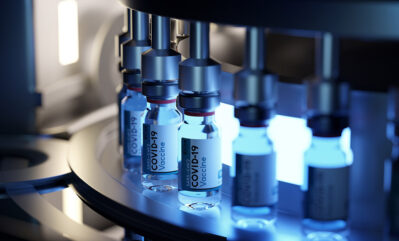By Hai Chen, MD, PhD
Assistant Professor of Clinical Neurology, Weill Cornell Medical College
In this meta-analysis, there was no statistically significant difference in the risk of new-onset seizure incidence between vaccinated individuals and placebo recipients in the 28-day post-injection period. Similarly, in the post-injection entire blinded phase (median follow-up 148, 121, and 43 days in three trials), no significant difference was observed between the vaccine and placebo recipients regarding the incidence of new developing seizures.
Rafati A, Jameie M, Amanollahi M, et al. Association of new-onset seizures with SARS-CoV-2 vaccines: A systematic review and meta-analysis of randomized clinical trials. JAMA Neurol 2024;81:611-618.
Seizures have been reported after severe acute respiratory syndrome coronavirus 2 (SARS-CoV-2) vaccination, and a study showed an increase in seizure frequency in epilepsy patients after SARS-CoV-2 vaccination. However, it is unclear whether SARS-CoV-2 vaccination and seizures have a cause-and-effect or merely a coincidental relationship. This study investigated the possible contribution of SARS-CoV-2 vaccines to developing seizures among the general population using a meta-analysis method.
Of 3,065 records from the systematic database, six randomized controlled trial (RCT) studies were identified for the qualitative study and meta-analysis. Different vaccines with various platforms, including messenger ribonucleic acid (mRNA), viral vector, and inactivated virus were studied in these six RCTs. The RCT studies were deemed low-risk on risk-of-bias assessment as measured by the Cochrane risk-of-bias tool.
All six RCTs were included in the analysis of the incidence of new-onset seizures in the 28-day post-injection period. The trial investigators evaluated each seizure event and confirmed the seizure event was related to the vaccine or placebo injection. Seizures that could be attributed to other causes were not included. In one RCT, the participants received only one vaccine or placebo injection. For the remaining five RCTs, participants received two injections 28 days apart, and the incidence of seizure was reported in the overall 28-day periods after the first and the second injections. Nine seizures were observed in 63,521 vaccine recipients (0.014%) and one seizure was observed in 54,919 placebo recipients (0.002%). There was no statistically significant difference in the incidence of seizures between the two groups (odds ratio [OR], 2.70; 95% confidence interval [CI], 0.76-9.57; P = 0.12). A subgroup analysis showed no significant difference in new-onset seizure incidence among adults receiving viral vector vaccines vs. placebo (OR, 3.63; 95% CI, 0.60-22; P = 0.28), or among children receiving mRNA vaccines vs. placebo (OR, 1.00; 95% CI, 0.10-9.61; P > 0.99).
The authors also investigated the seizure incidence in the entire post-injection double-blinded phase with the data derived from three RCTs, which reported the post-injection adverse events until unmasking. The median blinded follow-up time was 148 days, 121 days, and 43 days, respectively. Results from all RCTs showed a low incidence (< 0.1%) of new-onset seizure in either the vaccine or placebo group. After pooling the three studies, 13 seizures were observed in 43,724 vaccine recipients (0.03%) and five seizures were observed in 40,612 placebo recipients (0.012%). There was no statistical difference in seizure incidence between the vaccine and the placebo recipients (OR, 2.31; 95% CI, 0.86-6.23; P = 0.10).
In addition to seizures, the study also investigated the incidence of other neurological adverse events in a 28-day follow-up period from selected RCTs. Similarly, the pooled analysis did not show a significant difference in the incidence of ischemic stroke, severe headache, or syncope between the vaccine and the placebo recipients.
COMMENTARY
Because of the low incidence of seizures after vaccination, it could be challenging to distinguish a cause-and-effect or a coincidental relationship from a single study. This meta-analysis study included six RCTs with a large number of total participants (more than 118,000) to address this question. For seizure incidence in the post-injection 28-day period, an OR of 2.70 was revealed among vaccine recipients and placebo recipients. However, the difference between the two groups did not reach statistical significance (P = 0.12). Likewise, no significant difference in seizures was observed during the entire blinded phase. The findings suggest that there is no difference in the risk of seizure incidence among vaccinated individuals or placebo recipients. Similar results also were found regarding the risk of other neurological adverse effects, which suggests the absence of difference in the seizure incidence between the two groups is not the result of poor capturing of adverse events.
In this study, only public data were applied, and individual-level information was not available for further subgroup analysis. Findings from the RCTs were subjected to reporting bias. In addition, there was heterogeneity among the included RCTs, which were conducted at different times, in various populations/environments, and used different vaccines. These limitations could lead to potential drawbacks in this study.

